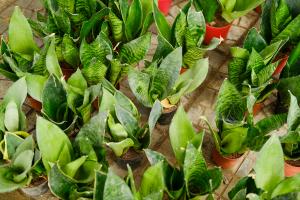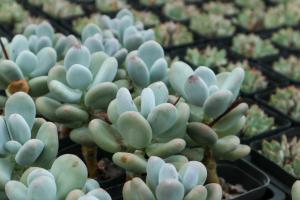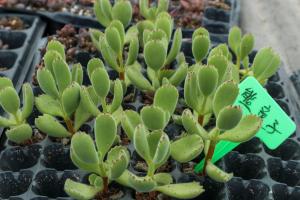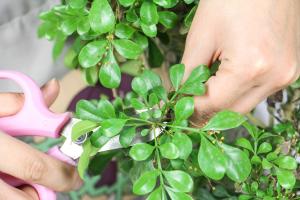How to Take Cuttings from a Money Tree Plant
The money tree plant, also known as Pachira aquatica or Malabar chestnut, is native to Central and South America. It is a popular houseplant known for its robust, braided trunk and broad, shiny leaves. However, as the plant ages, it can become too large for its pot or space. In this case, propagating from cuttings is an excellent way to maintain the plant's size and shape. Here are the steps to follow when taking cuttings from a money tree plant.
Materials Needed
Before you begin, ensure that you have the following materials:
Sharp, clean pruning shears or scissors
Clear plastic bag or plastic container with a lid
Clean pot with a drainage hole
Clean potting soil
Water
Step-by-Step Guide
Step 1: Choose the right cutting
Select a healthy, mature plant for cutting. Look for a stem about six inches long that has two or three sets of leaves. Ensure that the stem is flexible and not too mature or hardened.
Step 2: Prepare the cutting
Using sharp pruning shears or scissors, cut the stem diagonally below the node (joint where leaves emerge) to make a clean cut. Make sure that the cutting is at least two inches long below the node.
Step 3: Remove the lower leaves
Remove the bottom set of leaves from the cutting, leaving only the top two or three sets. This will reduce the surface area of the cutting, allowing it to devote more energy to root development.
Step 4: Dip the cutting
Dip the end of the cutting in rooting hormone powder. This will promote root growth and increase the chances of a successful propagation.
Step 5: Plant the cutting
Fill a clean pot with well-draining soil and make a hole about two inches deep. Insert the cutting into the hole and firm up the soil around it to ensure that it is stable enough to stay upright.
Step 6: Cover the cutting
Cover the cutting with a clear plastic bag or container with a lid to create a mini-greenhouse. This will help to retain moisture and create a humid environment that will promote root development.
Step 7: Provide light and water
Place the pot in a bright spot out of direct sunlight. Keep the soil moist, but not soggy, and ensure that the cutting is not exposed to extreme temperatures or drafts.
Step 8: Monitor the progress
Check the cutting regularly for signs of new growth, such as the emergence of new leaves. This will indicate that the plant has rooted and is ready for transplanting to a larger pot.
Conclusion
Taking cuttings from a money tree plant is a simple process that requires basic materials and skills. By following these steps, you can create new plants to maintain the size and shape of your existing plant or share them with your friends and family.

 how many times do yo...
how many times do yo... how many planted tre...
how many planted tre... how many pine trees ...
how many pine trees ... how many pecan trees...
how many pecan trees... how many plants comp...
how many plants comp... how many plants can ...
how many plants can ... how many plants and ...
how many plants and ... how many pepper plan...
how many pepper plan...































